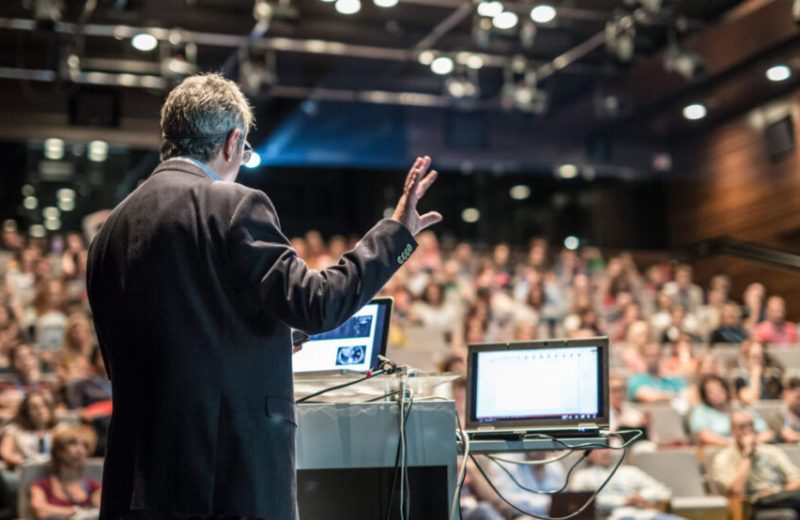Create a Connection
People don’t want just information, they want a connection. We have all endured interactions with cookie-cutter delivery that leave us looking for the door after the first 2 minutes. I just wrapped up two tough days of a year-long project recap. It made me recall my kickoff presentation to a room full of skeptical mayors, council members, and county judges. To build a connection, I reminded them I had been part of a team that provided support during times of disaster, and I was here to help again. Do you think they were interested to hear what I had to say? Absolutely. I connected through access to resources and offered opportunities for the future.
Sharing your stories, anecdotes, or experiences that are relevant to your audience creates a genuine connection. It opens the door to what follows. Confident presenters connect these experiences through storytelling. Weaving their understanding of the audience’s interests into their messages helps to reinforce and enhance retention.
In Moonwalking with Einstein, Joshua Foer recounts his year studying those who compete in memory competitions. He found the tool most often used is a “memory palace.” This method leverages the brain’s natural tendency to remember pictures rather than letters and numbers. What works for memorizing applies to presenting. A great story will stay with your audience long after the PowerPoint slides are gone.
Moderate Your Energy
Depending on the purpose of your presentation (which, by the way, may only be you and one other), balance the energy you generate. If your energy is nervous, it will come out. If it’s extremely overexcited, that shows up as well. Activating the right amount of energy that supports your message requires balance. Hold interest by fluctuating your levels of energy—like a good song (unless your favorite is extreme acid rock), the pace varies. Energy is contagious. When you bring enthusiasm and energy to your message, your audience is more likely to be engaged and enthusiastic as well. Your energy sets the tone for their experience.
Embrace Vulnerability
If you want to empower your message, there’s no better way than to embrace your own vulnerability. Social media filters and editing tools make it seem like the world is perfect. Yet sharing our own vulnerability enables us to connect with our audience on a deeply human level and makes us more relatable. Vulnerability also introduces an emotional dimension that transforms your message, leaving an impact that inspires possibility.
Understand Your Audience
To create change or shift thinking, you must endeavor to understand your audience. Who are they? What are their needs, challenges, and aspirations? What keeps them up at night?
For many of us, our tendency is to downplay our expertise and understanding. We often think we’re the “only ones” having problems and challenges. Something amazing happens, however, when you share and shed light on your “pain points.” You often find out that pain is shared by others—and they are looking for ways to make it stop. Once you have a clear picture of your audience, you can tailor your message to resonate with them on a profound level, and your message becomes not just relevant but indispensable.
Speaking of Message
Before you step into the spotlight, it’s crucial to define your core message. As Stephen Covey so profoundly shared, “Begin with the end in mind.” What is the key takeaway you want your audience to remember? In a recent training on presentations, I observed a corporate presentation, “Cadence.” All of the 30 participants followed an unwritten but consistent format. Their problem, like many others, was that they used the “once upon a time” sequential story format. Unfortunately, as they say in the news business, they “buried the lead.” By the time they reached the real purpose of the presentation—making transformative changes in the business—they either had lost audience attention or had run out of time.
The moral of the story is to put the important, dare I say, provocative messages first, then back them up. That way, you are not talking at your audience, you are instead involving them. Encourage participation, ask questions, encourage feedback, and create opportunities for interaction. An engaged audience is open to possibilities.
Bring the Show
I have a habit of third-party observation when attending events. In other words, instead of simply enjoying the Queen concert I attended recently, I was scoping out the stage, how and when the amazing staging would light up, and where Adam Lambert was standing. We can learn a lot from stage performers. They have the ability to transcend the vast arena space and connect with each one of us in the audience.
To be a change-maker or thought leader, bring your show. Transcend space—whether a few feet or an entire conference space—to connect with your audience. All of the hard work you put into crafting your perfect message will fall short without making the extra effort to have the best visuals, the best command of the stage, and, last but not least, the right look. When you walk out, there should be no doubt that you will deliver what your audience came for and more.
In football, they say, “Leave nothing on the field.” I would add a corollary to that: “Leave everything on the field.” Either way works; the message is give it everything you have. John F. Kennedy said it this way, “The only reason to give a speech is to change the world.” Craft and deliver your message to change the world. Take charge and let your message be a force for positive change. Your audience is waiting for you to lead them on this transformative journey.
















